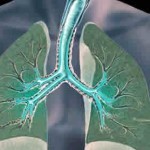 Emphasis in this study by researchers in Spain was on walking, the most common form of physical activity. Continue reading Hospitalization rate based on changes in physical activity in people with COPD
Emphasis in this study by researchers in Spain was on walking, the most common form of physical activity. Continue reading Hospitalization rate based on changes in physical activity in people with COPD
Category Archives: B. MANIPULATIVE METHODS
TENS device FDA-approved for migraine prevention
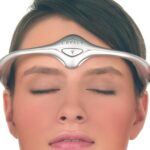 It’s the first device approved to prevent migraine headaches, and the first transcutaneous electrical nerve stimulation (TENS) device specifically authorized for use prior to the onset of pain.
It’s the first device approved to prevent migraine headaches, and the first transcutaneous electrical nerve stimulation (TENS) device specifically authorized for use prior to the onset of pain.
Here’s what we know about Cefaly. Continue reading TENS device FDA-approved for migraine prevention
Trade-offs: Comparing supplements vs. exercise
 Drs. Andrew Mendelsohn and James Larrick at the Panorama Research Institute and Regenerative Sciences Institute, in Sunnyvale, California, have complied an impressive list of reviews on the effects of exercise. Here’s the first in a series of summaries of their recent publications.
Drs. Andrew Mendelsohn and James Larrick at the Panorama Research Institute and Regenerative Sciences Institute, in Sunnyvale, California, have complied an impressive list of reviews on the effects of exercise. Here’s the first in a series of summaries of their recent publications.
Continue reading Trade-offs: Comparing supplements vs. exercise
TENS to reduce pain intensity in patients with tennis elbow
 People with “tennis elbow” (lateral epicondylitis) experience pain over the outer side of the elbow, which may extend down the forearm.
People with “tennis elbow” (lateral epicondylitis) experience pain over the outer side of the elbow, which may extend down the forearm.
Researchers at Keele University, in Staffordshire, UK, studied the response to TENS (transcutaneous electrical nerve stimulation) added to typical treatment. Continue reading TENS to reduce pain intensity in patients with tennis elbow
Risk of harm following usual chiropractic care
 According to a 2007 study by Canadian researchers, “Serious adverse events may be associated with pediatric spinal manipulation,” but “neither causation nor incidence rates can be inferred manipulation.”
According to a 2007 study by Canadian researchers, “Serious adverse events may be associated with pediatric spinal manipulation,” but “neither causation nor incidence rates can be inferred manipulation.”
Now, researchers at the University of Melbourne, in Australia, have taken a closer look at the frequency and severity of adverse effects from short-term usual chiropractic treatment. Continue reading Risk of harm following usual chiropractic care
Hopelessness and the value of CAM in ovarian cancer
 It’s reported that 55% of patients with ovarian cancer acknowledge a fear of dying, and 32% experience loss of hope in their fight against this illness.
It’s reported that 55% of patients with ovarian cancer acknowledge a fear of dying, and 32% experience loss of hope in their fight against this illness.
Researchers at Harvard Medical School, in Boston, examined CAM and its influence on hopelessness in these patients. Continue reading Hopelessness and the value of CAM in ovarian cancer
Review: Benefits of CAM to help treat hypertension
![]() The American Heart Association has summarized the blood pressure-lowering effects of several alternative approaches and provided recommendations for their use.
The American Heart Association has summarized the blood pressure-lowering effects of several alternative approaches and provided recommendations for their use.
Here’s what we know in people with blood pressure (BP) levels higher than 120/80 mmHg. Continue reading Review: Benefits of CAM to help treat hypertension
Here’s what we know about vitamin C and the common cold
 Vitamin C (ascorbic acid) for preventing and treating the common cold has been a subject of controversy for 70 years.
Vitamin C (ascorbic acid) for preventing and treating the common cold has been a subject of controversy for 70 years.
Now, The Cochrane Library has reviewed the data. Continue reading Here’s what we know about vitamin C and the common cold
Advantages of adding exercise to statin treatment
 Statins are prescribed to treat high cholesterol and cardiovascular disease. Increased fitness is recommended as an essential part of promoting health.
Statins are prescribed to treat high cholesterol and cardiovascular disease. Increased fitness is recommended as an essential part of promoting health.
Now, researchers at Georgetown University School of Medicine, in Washington DC, report the combined effects of fitness and statin treatment on mortality. Continue reading Advantages of adding exercise to statin treatment
Continue reading Advantages of adding exercise to statin treatment
Results of nonpharmacological approaches to treating pain
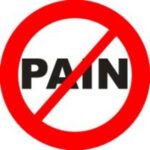 Researchers at Abbott Northwestern Hospital, in Chicago evaluated the effectiveness of an inpatient integrative medicine consult service for pain management. Continue reading Results of nonpharmacological approaches to treating pain
Researchers at Abbott Northwestern Hospital, in Chicago evaluated the effectiveness of an inpatient integrative medicine consult service for pain management. Continue reading Results of nonpharmacological approaches to treating pain
Risk of injury to children who use trampolines
 Trampoline jumping is a beneficial and constructive physical exercise for children, but it has a significant risk for injuries.
Trampoline jumping is a beneficial and constructive physical exercise for children, but it has a significant risk for injuries.
Now, after reviewing the evidence, the American Academy of Pediatrics is discouraging recreational use of trampolines in the home. Continue reading Risk of injury to children who use trampolines
Reducing the rate and risk of falling
 Approximately 30% of people over 65 years of age living in the community fall each year.
Approximately 30% of people over 65 years of age living in the community fall each year.
This Cochrane review updates what we know. Continue reading Reducing the rate and risk of falling
Consumer Alert: Neti Pots
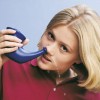 They’re used to rinse the nasal passages with a saline (salt-based) solution, and are popular to treat congested sinuses, colds, and allergies, and to moisten nasal passages exposed to dry indoor air.
They’re used to rinse the nasal passages with a saline (salt-based) solution, and are popular to treat congested sinuses, colds, and allergies, and to moisten nasal passages exposed to dry indoor air.
But, FDA has concerns about the risk of infection when neti pots are used improperly. Continue reading Consumer Alert: Neti Pots
Contributions of the counselor in diabetes lifestyle education
 Researchers in the Netherlands have reported their findings in the Active Prevention in High-Risk Individuals of Diabetes Type 2 in and Around Eindhoven (APHRODITE) study. Continue reading Contributions of the counselor in diabetes lifestyle education
Researchers in the Netherlands have reported their findings in the Active Prevention in High-Risk Individuals of Diabetes Type 2 in and Around Eindhoven (APHRODITE) study. Continue reading Contributions of the counselor in diabetes lifestyle education
Kinesiology tape
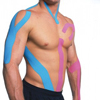 During the Olympics, you may have noticed brightly colored kinesiology (aka Kinesin) tape attached to the legs, backs, arms and other body parts of athletes.
During the Olympics, you may have noticed brightly colored kinesiology (aka Kinesin) tape attached to the legs, backs, arms and other body parts of athletes.
It’s meant to help stabilize tendons and joints and provide pressure relief. Researchers at the National Defense Academy, in Japan, studied its potential to alleviate muscle weakness. Continue reading Kinesiology tape
SIT and the co-disciplinary pain clinic
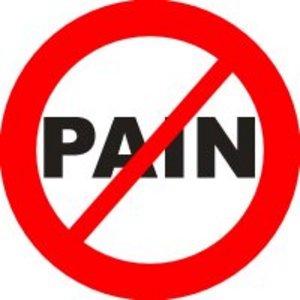 Clinicians in California described their clinical practice, which uses the simultaneous interview technique (SIT). Continue reading SIT and the co-disciplinary pain clinic
Clinicians in California described their clinical practice, which uses the simultaneous interview technique (SIT). Continue reading SIT and the co-disciplinary pain clinic
Adverse response to exercise
 Dr. Claude Bouchard and colleagues from around the US and Finland tell us that people differ in their response to regular exercise.
Dr. Claude Bouchard and colleagues from around the US and Finland tell us that people differ in their response to regular exercise.
Sometimes these differences contribute to adverse changes in cardiovascular and diabetes risk factors, according to this study. Continue reading Adverse response to exercise
Consumer Alert: “Bath Salts”
CAM use in the Manitoba IBD Cohort Study
 Researchers in Winnipeg, Manitoba surveyed the prevalence of CAM use in patients with inflammatory bowel disease. Continue reading CAM use in the Manitoba IBD Cohort Study
Researchers in Winnipeg, Manitoba surveyed the prevalence of CAM use in patients with inflammatory bowel disease. Continue reading CAM use in the Manitoba IBD Cohort Study
Support for exercise to preserve cognitive function
 Researchers at the Foundation of Public Health, Mutuelle Generale de l’Education Nationale, in Paris, reanalyzed data from the Women’s Antioxidant Cardiovascular Study (WACS), a cohort of women with prevalent vascular disease or 3 cardiovascular risk factors. Continue reading Support for exercise to preserve cognitive function
Researchers at the Foundation of Public Health, Mutuelle Generale de l’Education Nationale, in Paris, reanalyzed data from the Women’s Antioxidant Cardiovascular Study (WACS), a cohort of women with prevalent vascular disease or 3 cardiovascular risk factors. Continue reading Support for exercise to preserve cognitive function
